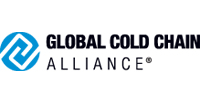Can Disruptive Advocacy Strategies unlock industry growth and cost saving opportunities for your members in a slow growth economy? While the possibility of a recession seems unlikely this year, growth remains a challenge for many industries. According to the Conference Board, U.S. growth in 2016 is forecast at 2.0% while Global growth is forecast slightly higher at 2.5%. As increasing regulatory oversight dominates the federal and global landscape, building an agency focused strategy on behalf of your members can pay dividends for the industry and for your association.
Disruptive Advocacy
Nontraditional associations are utilizing their strategic planning process as a launching point for disruption. For example, through survey research in 2014, the Global Cold Chain Alliance identified key business outcomes that matter most to its members. Helping the industry reduce regulatory compliance costs and grow revenues were high priorities. While GCCA’s new strategic plan was instrumental in pivoting the association to an external and strategic focus, the association was already moving in the direction of Disruptive Advocacy Strategies.
Foundation for Disruptive Advocacy Strategies
Through a 2008 Member Survey, GCCA Members sought help to identify the legislative and regulatory priorities of its membership. According to Corey Rosenbusch, President and CEO, the association recruited Lowell Randel to serve as Vice President, Government & Legal Affairs to lead an Industry initiative to reduce increasing costs of regulatory compliance. Having served as Deputy Assistant Secretary for Congressional Relations Rosenbusch was certain that Randel could build and position the Cold Chain Industry to yield positive results.
Starting in 2009 at the start of the Obama Administration, Refrigerated Warehouses, Transportation, and Construction Firms began to experience a considerable increase in compliance costs resulting from a Regulator driven “modernization” program.
Over a 7-year time frame, Rosenbusch and Randel deployed an effort to collaborate, build relationships, and achieve a better understanding of the Cold Chain Industry with key regulatory enforcement agencies including OSHA (Occupational Safety & Health Administration), EPA (United States Environmental Protection Agency), FDA (U.S. Food and Drug Administration), DOE (U.S. Department of Energy), and USDA (U.S. Department of Agriculture). Both Rosenbusch and Randal aggressively pursued opportunities to create a more positive dynamic that led to mutual understanding and positive results for the Cold Chain Industry.
Collaborators Instead of Adversaries
The key component that drove Disruption for the Industry is all about working with Regulators to achieve shared goals. Much of the cost reductions achieved on behalf of the industry have been as a direct result of a strategy to build relationships and maintain ongoing, open, and direct communications between the Industry and with key Regulatory Agencies.
Leading The Cold Chain
Advancing the clock to 2015, the Board of Directors now wanted GCCA to elevate and position the industry in the global marketplace as Leader of the Cold Chain. As a result, the association is now the Industry’s Strategic Ally through an enhanced and more collaborative and innovative advocacy program. The strategic plan adopted by the Board of Directors in September 2015 directs the association to “Lead the Cold Chain” inside and outside of Washington, DC and all around the world:
- Drive the development of cold chain standards.
- Convene stakeholders to lead the dialogue on issues impacting the cold chain.
- Achieve recognition as an expert and innovator in the cold chain.
- Differentiate the Industry’s value.
- Articulate the critical role the cold chain plays in delivering safe, high quality food and other products to consumers around the world.
Opportunities to highlight, promote the industry, emphasize the industry’s importance to Regulators (domestically and internationally) and Customers reflect GCCA’s implementation its recently approved Strategic Plan.
Member Call to Action
Maximizing its member engagement capacity on key regulatory and legislative issues that impact its member business outcomes GCCA launched its own Advocacy Portal in 2015. Cold Chain Industry “Calls to Action” are all focused on issues that reduce compliance costs. According to Rosenbusch member engagement is more substantial because of the association’s pivot to an external business outcome focus.
Disruptive Advocacy Strategies
While maintaining a strong presence on legislative priorities on Capitol Hill remains important, it’s not the only way to leverage precious association and industry resources. Pivoting to an external focus and becoming a strategic ally on domestic and global regulatory compliance aligns your association with outcomes that your members need to be successful. It’s also another opportunity for Associations to be Disruptors at a time when your members need your support to be successful in today’s challenging marketplace.
 In a slow growth environment look for companies and professionals to continue to gravitate only to those organizations who move the needle for their industries. For the Global Cold Chain Alliance, revenues have grown by 25% in two years. Welcome to the age of Disruptive Advocacy Strategies, they move the needle for your member’s and they drive your association’s bottom line.
In a slow growth environment look for companies and professionals to continue to gravitate only to those organizations who move the needle for their industries. For the Global Cold Chain Alliance, revenues have grown by 25% in two years. Welcome to the age of Disruptive Advocacy Strategies, they move the needle for your member’s and they drive your association’s bottom line.
Free eBook “Accelerating Strategic Member Engagement” is available upon request for all Association Executives at www.potomaccore.com






